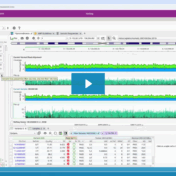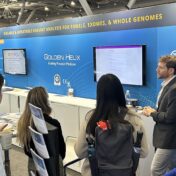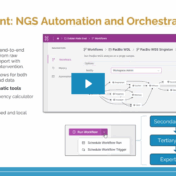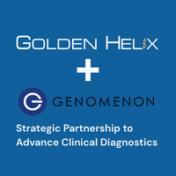Probably one our most popular public annotation sources we curate and update is the database of Non-Synonymous Functional Predictions (dbNSFP). In it’s recent update, it has expanded the predictions to include FATHMM-MKL and VarSeq now incorporates this new prediction into its voting algorithm of now 6 different discrete predictions per variant. You can update to dbNSFP 3.0 using the built-in… Read more »
In a previous blog post, I demonstrated using VarSeq to directly analyze the whole genomes of 17 supercentenarians. Since then, I have been working with the variant set from these long-lived genomes to prepare a public data track useful for annotation and filtering. Well, we just published the track last week, and I’m excited to share some of the details… Read more »
Up until a few weeks ago, I thought variant classification was basically a solved problem. I mean, how hard can it be? We look at variants all the time and say things like, “Well that one is probably not too detrimental since it’s a 3 base insertion, but this frameshift is worth looking into.” What we fail to recognize is… Read more »
SVS 7.6.7 features new tools for filtering sequencing data based on functional predictions and allele frequencies. To complement these new features, new annotations tracks have been uploaded to our data server and are now available for our customers! Below you will find descriptions of the new tools and the related annotations track(s).
Thank you to everyone who joined our recent webcast, “VSWarehouse for Genome Centers: Scalable, Secure Whole-Genome Infrastructure for Modern Sequencing Programs,” presented by Gabe Rudy on December 10, 2025. We appreciate the strong attendance and the excellent questions regarding the operational and security needs of modern genome centers. For those who missed it or need a recap, the session focused… Read more »
As long-read sequencing solidifies its role in clinical and translational research, labs are increasingly seeking streamlined methods to transition from raw data to actionable results. With the release of VSWarehouse 3.0, Golden Helix now supports a fully integrated implementation of PacBio’s somatic workflow, providing users with a powerful, centralized environment for managing large datasets, running best-practice pipelines, and automating tertiary… Read more »
Golden Helix is excited to exhibit at the Association for Molecular Pathology (AMP) 2025 Annual Meeting in Boston, Massachusetts, where we’ll showcase our newest advancements in variant interpretation, enterprise genomics, and scalable software deployment. Visit us at Booth #543 to explore how VSWarehouse and our Bring Your Own Cloud (BYOC) solution enable laboratories to deploy secure, scalable, and compliant cloud-based… Read more »
At Golden Helix, we’re proud to see how researchers worldwide continue using our software to accelerate discovery and improve clinical decision-making. These October 2025 publications highlight how VarSeq is advancing genetic research across cancer, hereditary disease, and molecular diagnostics. From identifying new variant mechanisms to expanding our understanding of genotype–phenotype relationships, these studies demonstrate how Golden Helix tools empower teams… Read more »
Recently, Golden Helix attended the ASHG 2025 conference, where we had the opportunity to showcase our partnership with Genomenon. This collaboration took center stage at both our booth and Genomenon’s CoLab session, Automating Genomic Workflows: Cutting Interpretation Time, Accelerating Turnaround, and Increasing Diagnostic Yield. Our discussions centered on a problem that every clinical lab faces as variant volumes continue to… Read more »
As Next-Generation Sequencing (NGS) becomes central to modern clinical diagnostics, laboratories are managing more data than ever before, and turning that data into actionable insight requires both precision and scalability. In our recent webcast, Next-Gen Sequencing at Scale: Transforming Per-Sample Outcomes into Institutional Knowledge with VSWarehouse, we explored how Golden Helix’s software ecosystem streamlines NGS analysis, bridging the gap between… Read more »
As whole-genome sequencing becomes routine in clinical practice, variant interpretation remains both the opportunity and the obstacle. VarSeq users can efficiently process and report individual samples using extensive annotations and automated classification tools—but even the most comprehensive databases can leave gaps. Some variants simply aren’t found in ClinVar or ClinGen, leaving analysts without clear direction. This is where Genomenon’s Mastermind… Read more »
Every October, we prepare for spooky surprises — creaky doors, eerie whispers, and shadows that move when no one’s there. But in the world of genomics, at any given time and for any given analysis, there’s another kind of haunting that can appear: the ghost in the pipeline — the incidental finding. 👻 Specters in the Genome As you run… Read more »
Breakends (BNDs) represent the precise genomic coordinates where DNA is rearranged in structural variants such as translocations, inversions, and complex rearrangements. Analyzing breakends in NGS analysis is important because they capture the exact “breakpoints” of structural alterations, enabling accurate identification of gene fusions, large deletions, or other events that can disrupt or activate genes of clinical relevance. Systematically tracking how… Read more »
Short Tandem Repeats (STRs) are increasingly recognized as clinically important genetic variants, contributing to a wide range of rare inherited disorders. Historically, the analysis and clinical reporting of STRs have been challenging due to limitations in both sequencing technologies and interpretation frameworks. With the advent of long-read sequencing technologies and the advanced secondary analysis pipelines provided by PacBio, Oxford Nanopore,… Read more »
Golden Helix is excited to spread the word about our partnership with Genomenon, a genomic intelligence giant! We recently presented a joint webcast featuring Dr. Nathan Fortier, Director of Research, Dr. Rana Smalling (Field Application Scientist), members of the Golden Helix team, and Denice Belandres (Senior Manager of Customer Success) from the Genomenon team. This webcast demonstrated how VarSeq integrates… Read more »
When performing variant classification using VarSeq’s ACMG classifier, a large number of variants inevitably fall into the category of variants of uncertain significance (VUS). This is because much of the evidence required for confident classification cannot be programmatically evaluated. Take PS3, for example, the criterion for functional evidence. This criterion requires well-established in vitro or in vivo studies, but assessing… Read more »
In recent years, the adoption of advanced bioinformatics platforms has enabled clinicians and researchers to identify novel variants, characterize complex inheritance patterns, and better understand the clinical impact of genetic disorders. Below are publications from customers in September 2025, showcasing the work built upon the trusted capabilities of our VarSeq and VS-CNV software to annotate, filter, and interpret genomic variants… Read more »
In this blog post, I’ll highlight the benefits of using VSPipeline to automate tertiary analysis in VSWarehouse. Users can now run VSPipeline project creation as a standalone task or a final step in a bioinformatic workflow without writing code. Simply use one of our shipped VarSeq projects or create your own, then automate that project as a template that can… Read more »
We’re thrilled to announce that VarSeq 3.0.0 is right around the corner, and with it comes one of the most exciting updates yet: a complete reimagining of the Assessment Catalogs system. Whether you’re curating clinically relevant variants, tracking tumor-specific calls, or building rich catalogs of sample information, the new system is designed to be more powerful, more versatile, and easier… Read more »
Today, we announced a strategic partnership with Genomenon to integrate its Mastermind Genomic Intelligence Platform and Cancer Knowledgebase (CKB) into the Golden Helix software suite. This collaboration combines two industry-leading platforms to enhance genomic interpretation and deliver high-confidence, literature-backed insights to clinical laboratories worldwide. Through this integration, Golden Helix customers gain seamless access to Genomenon’s expertly curated germline and somatic… Read more »
















